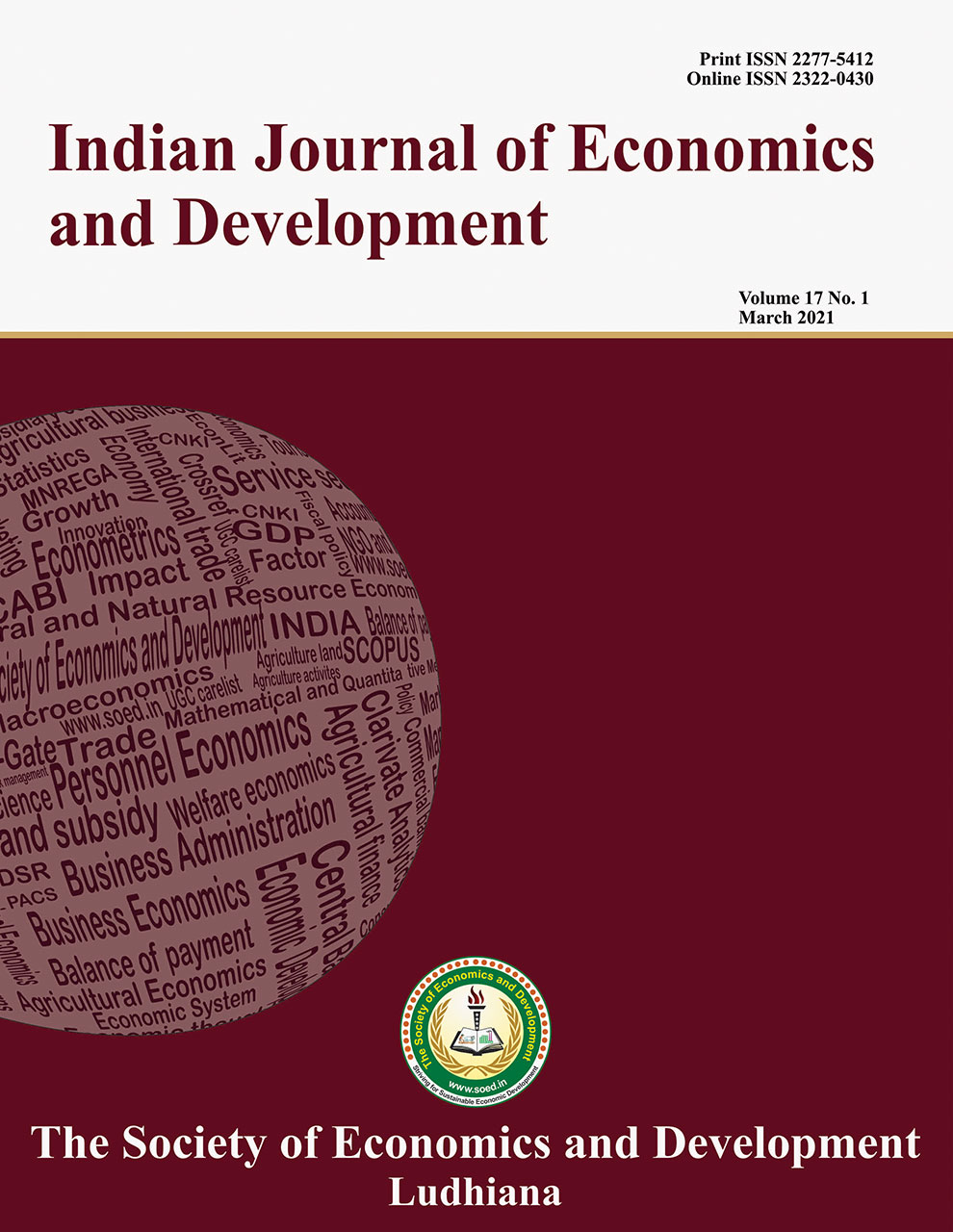Analysing Growth Paths and Employment Performance of Indian Food Processing Industry: Uncovering Dynamics at the Sub-sectoral Level

Price: ₹ 500
Author: Shalini Saksena and Robin Singhal
Author Address: Professor of Economics, Delhi College of Arts and Commerce, University of Delhi, New Delhi-110023 and Assistant Professor of Economics, School of Liberal Studies, Dr. B.R. Ambedkar University Delhi, Lothian Road, Kashmere Gate, Delhi-110006 (Delhi)
Keywords: Employment-elasticities, food processing, labour productivity, production-function, sub-sectoral analysis
JEL Codes: D24, J24, L66, O49
Abstract
Against
the backdrop of a potential productivity-employment trade-off, the performance
of the Indian Food Processing Industry (FPI) and its sub-sectors on key
employment-related indicators was assessed over two decades (1998-99 to
2017-18). Based on ASI's 4-digit level dataset on FPI's 18 sub-sectors, the
patterns of output growth were analysed and categorised into extensive, intensive,
stagnant and virtuous growth paths. Pooled panel regression-based employment
elasticities were estimated across subsectors to determine prospects of
employment generation. Despite declining employment elasticities for aggregate
FPI, prospects for future employment creation were found in the rapidly growing
subsectors, which exhibited relatively higher employment elasticity of growth.
The exploration of sub-sectoral dynamics highlights the need for adequately
reflecting on the heterogeneity in employment-related parameters across growth
paths and suitably inform policy interventions ing at a juncture when the Government
of India has renewed emphasis on boosting employment in the organised
manufacturing segment.
Description
Indian Journal of Economics and Development
Volume 17 No. 4, 2021, 745-756
DOI: https://doi.org/10.35716/IJED/21026
NAAS Score: 5.15
Indexed in Clarivate Analytics (ESCI) of WoS
Indexed in Scopus
UGC Approved



